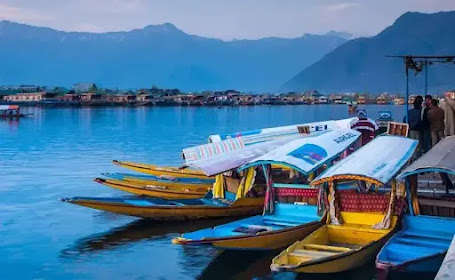Introduction
Jammu and Kashmir, often referred to as the "Crown of India," is a region of unparalleled beauty and cultural richness nestled in the northernmost part of the Indian subcontinent. It is a land where snow-capped mountains, pristine valleys, and ancient traditions coalesce to create an enchanting tapestry. This region's history, geography, and people are intertwined in a complex narrative that has captured the world's attention for decades.
1- Geographical Marvels
From the picturesque Dal Lake in Srinagar to the towering peaks of the Himalayas, Jammu and Kashmir's geography is as diverse as it is captivating. The state is divided into three distinct regions: Jammu, Kashmir Valley, and Ladakh. The Jammu region is known for its temples and lush landscapes, while the Kashmir Valley boasts serene lakes, verdant meadows, and the world-famous Mughal Gardens. Ladakh, often called the "Land of High Passes," presents a stark yet breathtaking panorama of barren mountains and clear blue skies.
2- Cultural Diversity
Jammu and Kashmir is a microcosm of cultures and religions. It's a place where Hindu, Muslim, Sikh, and Buddhist communities have coexisted for centuries. The region's cultural richness is evident in its festivals, traditional art forms, and cuisine. The annual Amaranth Yataro, a significant Hindu pilgrimage, attracts thousands of devotees to the Amaranth Cave Temple in the state.
3- Historical Significance
The history of Jammu and Kashmir is as complex as its topography. The princely state's accession to India in 1947 led to a long-standing conflict with Pakistan, giving rise to geopolitical tensions. The region's political status has been a focal point of international discussions. Despite its tumultuous history, the people of Jammu and Kashmir have demonstrated resilience and an unwavering spirit.
4- Tourism PotentialJammu and Kashmir's tourism potential is unparalleled. The state's diverse landscapes offer something for every traveler, from trekking and skiing in the mountains to enjoying a shikara ride on the Dal Lake. Gulmarg, often called the "Meadow of Flowers," is a popular skiing destination, while Pahalgam's scenic beauty is an ode to nature's grandeur. Ladakh's unique landscapes and monasteries attract adventure seekers and spiritual wanderers alike.
5- Challenges and Aspirations
The region has faced challenges ranging from political unrest to natural calamities. The 2014 floods in the Kashmir Valley, for instance, had a devastating impact on communities and infrastructure. Efforts to rebuild and restore continue, as the people's resilience shines through.
6- The Road Ahead
Jammu and Kashmir is at a crossroads, seeking stability, development, and a brighter future. Initiatives aimed at promoting sustainable tourism, preserving cultural heritage, and fostering economic growth are crucial for the region's progress. Additionally, creating an environment of peace and dialogue to address long-standing issues will pave the way for a harmonious and prosperous Jammu and Kashmir.
Conclusion
Jammu and Kashmir's majestic landscapes, vibrant cultures, and storied history make it a region of global significance. Beyond the headlines, it is a place where the human spirit persists amid challenges, where nature's beauty evokes awe, and where diversity is celebrated. As the region navigates its journey toward a more stable and prosperous future, its allure as a treasure trove of both natural and cultural wonders remains ever vibrant.



.webp)
.webp)


Comments
Post a Comment